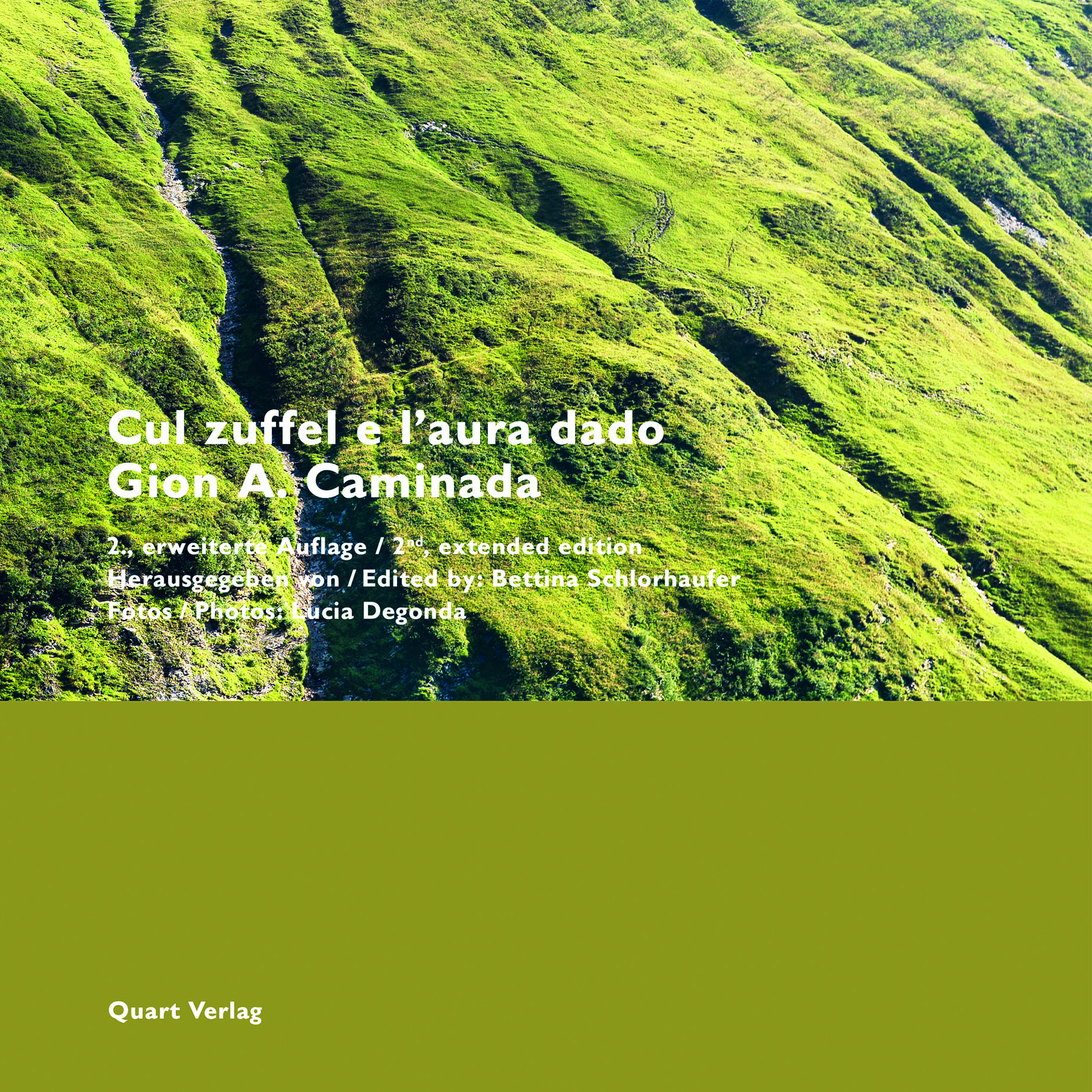***
Title: Cul zuffel e l’aura dado. Gion A. Caminada
Author: Bettina Schlorhaufer
Edited by: Quart Verlag
2018. ISBN: 978-3-03761-114-2
Language: German and English
293 pages
***
“The phenomenon of universalization, while being an advancement of mankind, at the same time constitutes a sort of subtle destruction, not only of traditional cultures, which might not be an irreparable wrong, but also of what I shall call for the time being the creative nucleus of great cultures, that nucleus on the basis of which we interpret life, what I shall call in advance the ethical and mythical nucleus of mankind. (…) by the spreading before our ayes of a mediocre civilization which is the absurd counterpart of what I was just calling elementary cultura. Everywhere throughout the world, one finds the same bad movie, the same slot machines, tha same plastic or aluminium atrocities, the same twisting of language of propaganda, etc. It seems as if mankind, by approaching en masse a basic consumer cultura, werw also stopped en masse at a subcultural level.”
“El fenómeno de la universalización, siendo un avance de la humanidad, constituye al mismo tiempo una especie de destrucción sutil, no sólo de las culturas tradicionales, lo que podría no ser un error irreparable, sino también de lo que llamaré por el momento el núcleo creador de las grandes culturas, ese núcleo a partir del cual interpretamos la vida, lo que llamaré de antemano el núcleo ético y mítico de la humanidad. (…) por la difusión ante nuestros ojos de una civilización mediocre que es la contrapartida absurda de lo que acabo de llamar cultura elemental. En todas partes del mundo, uno encuentra la misma mala película, las mismas tragaperras, las mismas atrocidades de plástico o de aluminio, el mismo giro del lenguaje de la propaganda, etc. Parece que la humanidad, al acercarse en masa a una cultura básica de consumo, también se detuvo en masa a un nivel subcultural.”
Paul Ricouer, History and Truth
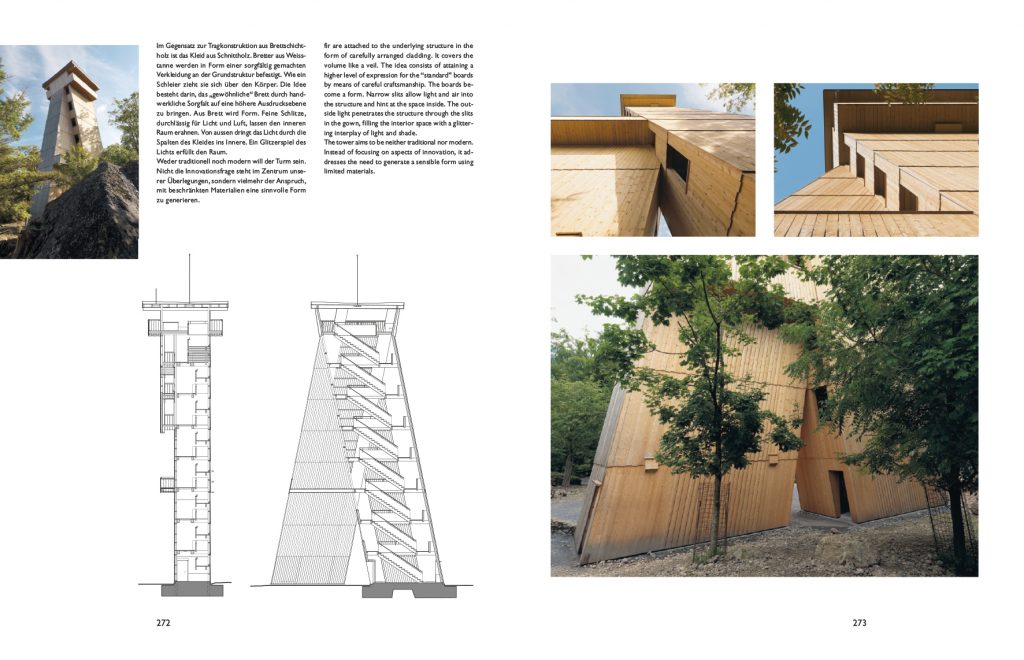
You have been dragging your feet on the path for hours, you have even stumbled. Together with a group of cows we rested for a few minutes in silence. The succession of broken peaks violently distorts the serene blue of the sky. There is no trace of clouds. We walk, perhaps, above them. We left behind several wooden houses and other similar buildings, which smelled more like barns. The path is steep and the road is loose. Small stones slide under our feet as they surely did already downhill, washed away by the runoff of the last rain. From up there the roof looked so heavy… Its stone covering wanted to crush under its shadow everything that tried to seek shelter. A few meters away, seeing it now from below, his presence is nevertheless light. A stone plinth builds a terrace from the neighbouring baroque church, houses the cemetery, retains the weight of the soil and reaches our feet, unfolding a carpet on which the Stiva das Morts stands. On these walls, which no longer have any memory left, other younger ones are built. The concrete that makes them up being barely blackened. Natural wooden beams are stacked one on top of the other and braced at the corners, letting their ends fly off to dissolve the apex in the way that Antoni Gaudí first or Mies van der Rohe later made famous in places where what the architecture books say has an audience. Shorter pieces, now transverse to those that defined the walls, fly again to protect the windows from wind or rain. Jambs of modern expression are the only evidence we have found in the village that time has also passed here. The eaves containing the stone pieces of the roof, still wet from this morning’s dew, continue the line of the classical mouldings of the neighbouring church. A gap without a shadow, of an overwhelming abstraction and purity, opens up like a tombstone badly placed on a still unowned grave. If I could choose only one wish I would ask to live always close to heaven, a heaven as real as the abyss.
Llevas horas arrastrando los pies por la vereda, incluso has llegado a tropezar en alguna ocasión. Junto a un grupo de vacas hemos descansado unos minutos en silencio. La sucesión de picos quebrados distorsiona con violencia el sereno azul del cielo. No hay rastro de nubes. Andamos, quizá, por encima de ellas. Dejamos atrás varias casas de madera y otras edificaciones similares, que olían más bien a graneros. El camino es empinado y su firme está suelto. Piedras de pequeño tamaño se deslizan bajo nuestros pies como seguramente lo hicieron ya cuesta abajo, arrastradas por la escorrentía de la última lluvia. Desde allí arriba el tejado parecía tan pesado… Su cobertura de piedra quería aplastar bajo su sombra todo aquello que intentase buscar refugio. A unos metros de distancia, viéndolo ahora desde abajo, su presencia es sin embargo ligera. Un zócalo de piedra construye un bancal desde la vecina iglesia barroca, alberga el cementerio, retiene el peso de las tierras y alcanza nuestro pies desplegando una alfombra sobre la que se levanta la Stiva das Morts. Sobre estos muros ya sin memoria, se levantan otros más jóvenes, el hormigón que los constituye apenas está ennegrecido. Vigas de madera natural se apilan una sobre otra y se arriostran en las esquinas, dejando volar sus extremos para disolver el vértice a la manera que Antoni Gaudí primero o Mies van der Rohe después hicieron célebre en lugares donde aquello que cuentan los libros de arquitectura tiene algún público. Piezas más cortas, ahora en sentido transversal a aquellas que definían los muros, vuelan de nuevo para proteger las ventanas del viento o la lluvia. Jambas de expresión moderna que son la única evidencia que hemos encontrado en el pueblo de que el tiempo también aquí ha transcurrido. El alero que contiene las piezas de piedra del tejado, aún húmedas del rocío de esta mañana, continúa la línea de las molduras clásicas de la iglesia vecina. Un hueco sin sombra, de una abstracción y pureza que sobrecogen, se abre como una lápida mal apoyada sobre una tumba todavía sin dueño. Si pudiera elegir sólo un deseo pediría vivir siempre cerca del cielo, de un cielo tan real como el abismo.
To live in the Alps, up there where the wind blows relentlessly.
Vivir en los Alpes, allí arriba donde el viento sopla sin descanso.
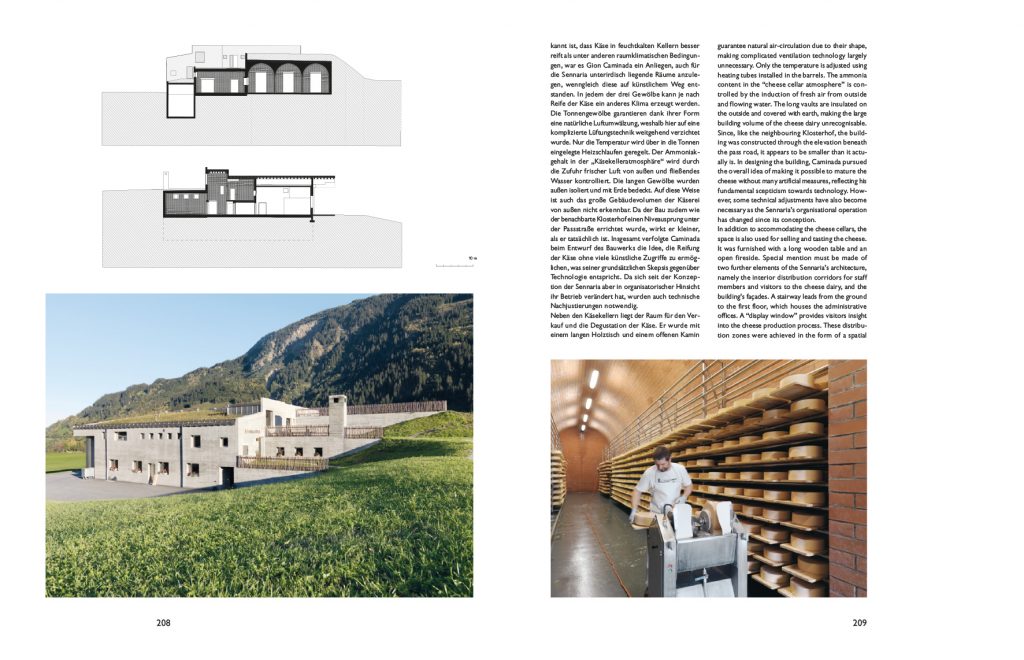
“As an architect one is necessarily also engaged in research; one would not otherwise be able to solve current problems. It is a phenomenon of our time that the general public does not accept architecture, by and large. The reason being that architecture isa ll often simply an end in ittself and rarely used as a means of addressing the problems at hand. I believe that social, economic and aesthetic aspects must be much more closely interwoven. Only then would architecture give rise to benefits that people can appreciate. When an architect simply pushes a certain aesthetic, people do not see the pint of his work. The farmers for example say, “If a barn functions well, it may look good, too”. Despite my holistic approach and in contrast to many of my colleagues, I am not afraid that architecture will lose its claim to autonomy or cease to be an artistic discipline in its own right, for these are important factors, too.”
“Como arquitecto uno se dedica necesariamente también a la investigación; de otra manera no podría resolver los problemas actuales. Es un fenómeno de nuestro tiempo que el público en general no acepta la arquitectura en general. La razón es que la arquitectura es a menudo simplemente un fin en sí misma y rara vez se utiliza como un medio para abordar los problemas en cuestión. Creo que los aspectos sociales, económicos y estéticos deben estar mucho más estrechamente entrelazados. Sólo así la arquitectura dará lugar a beneficios que la gente pueda apreciar. Cuando un arquitecto se limita a impulsar una cierta estética, la gente no entiende su obra. Los granjeros, por ejemplo, dicen: “Si un granero funciona bien, también puede tener buena apariencia”. A pesar de mi enfoque holístico y en contraste con muchos de mis colegas, no tengo miedo de que la arquitectura pierda su reclamo de autonomía o deje de ser una disciplina artística por derecho propio, ya que estos son factores importantes también”.
Gion A. Caminada, page 171
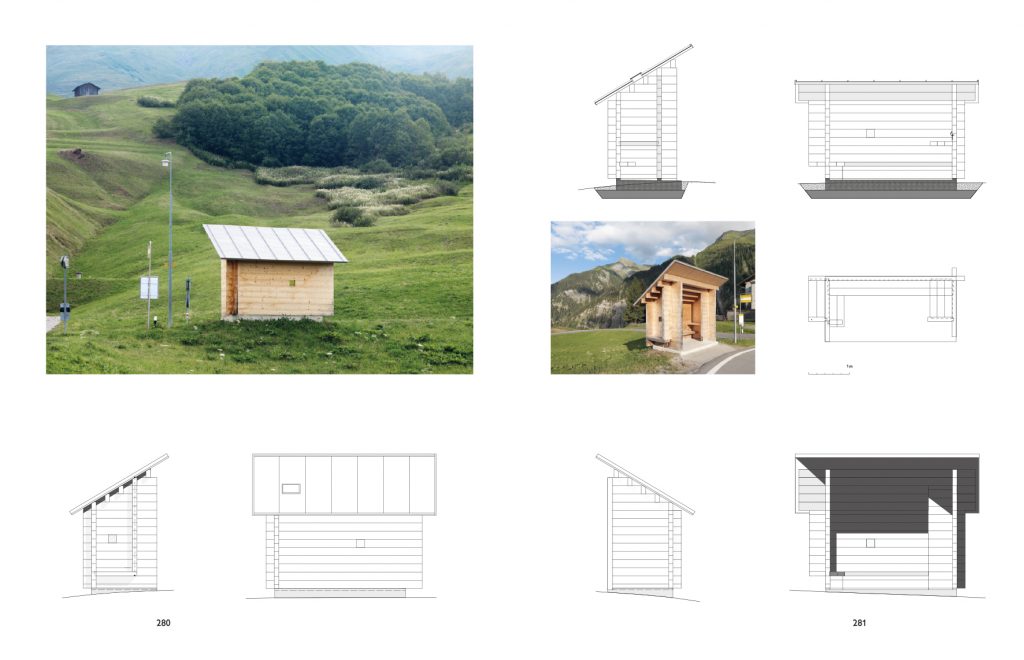
A carpenter turned architect, Gion A. Caminada is the author of several of the non-transferable architectural constructions that make up the settlement of Vrin and its surroundings. Little known in other latitudes or geographies distant from valleys and Alpine peaks, his approach to architectural practice is a must in order to clearly understand the intrinsic relationship between architecture and its context. His most widespread work, the Stiva da Morts in Vrin, a village mortuary annexed to the local cemetery, is a masterful example of the dialogue between modernity and tradition, with a superb understanding of local customs, as well as the physical, social and economic context of a community used to living in isolation. If there is something that stands out in the attitude of Gion A. Caminada, it is precisely his unwavering position to lead a dialogue focused on progress between the different actors acting in his context.
Carpintero convertido en arquitecto, Gion A. Caminada es autor de varias de las construcciones de una arquitectura intransferible que constituyen el asentamiento de Vrin y sus alrededores. Poco conocido en otras latitudes o geografías distantes de valles y picos alpinos, su aproximación a la práctica arquitectónica es de obligado conocimiento para comprender de manera evidente la intrínseca relación necesaria entre arquitectura y su contexto. Su obra más difundida, la Stiva da Morts en Vrin, morgue del pueblo anexa al cementerio local, es un ejemplo magistral de diálogo entre modernidad, y tradición, con una soberbia comprensión de las costumbres locales, así como del contexto físico, social y económico de una comunidad habituada a vivir en condición de aislamiento. Y es que si hay algo que destaca sobremanera en la actitud de Gion A. Caminada, es precisamente su posicionamiento inquebrantable por conducir un dialogo enfocado al progreso entre los diferentes actores que actúan en su contexto.
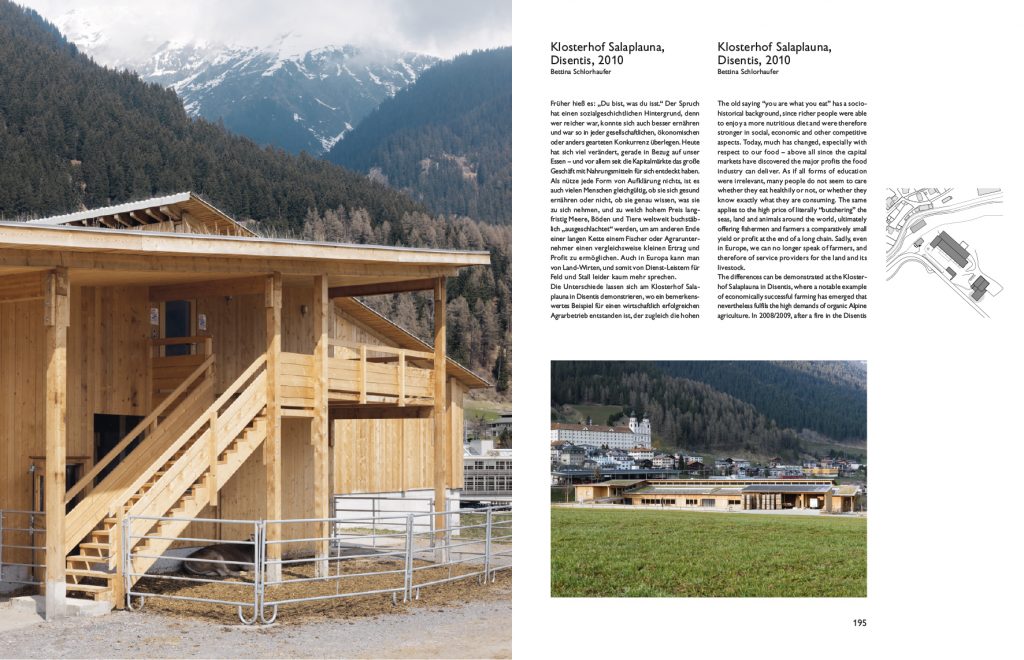
Little or not at all influenced by the picturesque sentimentality that made these landscapes famous, he carries out an essential task as an example of understanding the processes and elements inherited from tradition. Its application will evolve, however, towards a possible future worth fighting for, resigned perhaps to not evoking a more or less remote past that, also perhaps, is not as romantic as the collective memory sometimes insists on evoking. Convinced, moreover, of the need to intervene in the economic processes that underpin the existence of a given community, he has been able to convene and involve the inhabitants who make up that community in the conservation and construction of the physical space that houses them.
Poco o nada influido por un sentimentalismo pintoresco que precisamente hizo célebre estos paisajes, desarrolla una labor imprescindible como ejemplo de comprensión de los procesos y elementos heredados de la tradición. Su aplicación evolucionará, sin embargo, hacia un futuro posible por el que merece la pena pelear, resignado quizá a no evocar un pasado más o menos remoto que, también quizá, no sea tan romántico como la memoria colectiva a veces se empeña en evocar. Convencido además en la necesidad de intervenir en los procesos económicos que fundamentan la existencia de una determinada comunidad, ha sido capaz de convocar e implicar a los habitantes que constituyen dicha comunidad en la conservación y construcción del espacio físico que les aloja.

“Regionalism should not be sentimentally identified with the vernacular. By definition, critical regionalism is a recuperative, self-conscious, critical endeavor, and nothing can be further from the vernacular in the initial sense of the term.(…)The vernacular lies beyond any kind o evaluation in terms of bourgeois aesthetics. In fact, one of the problems with the term regionalism arises out of the affix ism since this patently implies the postulation of a style, that is, of a received set of aesthetic preferences. Critical regionalism should, in my view, lie beyond style. It should devote itself in the last analyses to establishment of bounded domains and tactile presences with which to resist the dissolution of the late-modern world.”
“El regionalismo no debe identificarse sentimentalmente con lo vernáculo. Por definición, el regionalismo crítico es un esfuerzo de recuperación, autoconsciente y crítico, y nada puede estar más lejos de lo vernáculo en el sentido inicial del término. (…)Lo vernáculo está más allá de cualquier tipo de evaluación en términos de estética burguesa. De hecho, uno de los problemas del término regionalismo surge del sufijo ismo, ya que éste implica claramente la postulación de un estilo, es decir, de un conjunto de preferencias estéticas recibidas. El regionalismo crítico debería, en mi opinión, estar más allá del estilo. Debería dedicarse, en último análisis, a establecer dominios delimitados y presencias táctiles con las que resistir la disolución del mundo tardío-moderno”.
Kenneth Frampton, Ten points on an Architecture of Regionalism: A provisional polemic.
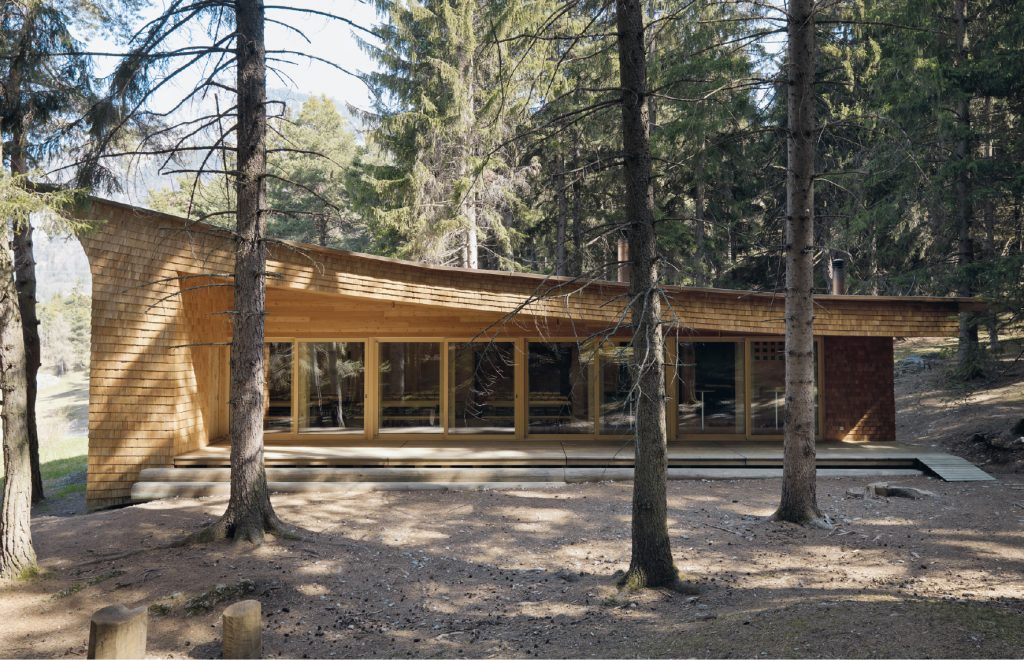
Completely devoid of theoretical speculation, the architecture of Gion A. Caminada is an absolute response to the problems present in a given context. His work is non-transferable, outside the context for which it was conceived it would lack sense or reason to be. In his case, probably more than in almost any other, architecture is the built cultural manifestation of his environment. His greatest success, moreover, is to move away from sentimentalism or the mimetic evocation of the forms of the past, which are meaningless today without the processes that shaped them. A minimally calm observation will highlight the modernity present in a sensibly silent architecture. If imagination is the delirium of a technique, the mastery he exhibits over local construction techniques, inherited from his training as a carpenter, allows him to develop innovative constructive and structural solutions by pushing the tools available to him to the limit.
Completamente despojada de especulación teórica, la arquitectura de Gion A. Caminada es respuesta absoluta a los problemas presentes en un contexto determinado. Su obra es intransferible, fuera del contexto para el que fue concebida carecería de sentido o razón de ser. En su caso probablemente más que en casi ningún otro, la arquitectura es la manifestación cultural construida de su entorno. Su mayor acierto, además, alejarse del sentimentalismo o la evocación mimética de las formas del pasado, carentes de sentido hoy en día sin los procesos que las conformaron. Una observación mínimamente sosegada pondrá en evidencia la modernidad presente en una arquitectura sensatamente silenciosa. Si la imaginación es el delirio de una técnica, el domino que exhibe sobre las técnicas constructivas locales, heredado de su formación como carpintero, le permite desarrollar soluciones constructivas y estructurales innovadoras llevando al límite las herramientas de las que dispone a su alcance.
The monograph “Cul zuffel e l’aura dado” (Architecture with the Winds) published by Quart Verlag is an atypical case within architecture books. The recent 2018 edition is a new monograph that has been built on an original 2005 edition with the same title. This new edition should be understood as an extension, an update with the most recent work by Gion A. Caminada that has been carried out from the existing base, maintaining the original structure and contents. The relationship between container and content, channel and message could not be more accurate.
La monografía “Cul zuffel e l’aura dado” (Architecture with the Winds) editada por Quart Verlag es un caso atípico dentro de los libros de arquitectura. La reciente edición del año 2018 es una monografía nueva que se ha construido sobre una edición original del año 2005, de mismo título. Habría que entender esta nueva edición como una extensión, una actualización con la obra de Gion A. Caminada más reciente que se ha llevado a cabo a partir de la base existente, manteniendo la estructura y los contenidos originales. La relación que se produce así entre contenedor y contenido, canal y mensaje no podría ser más acertada.
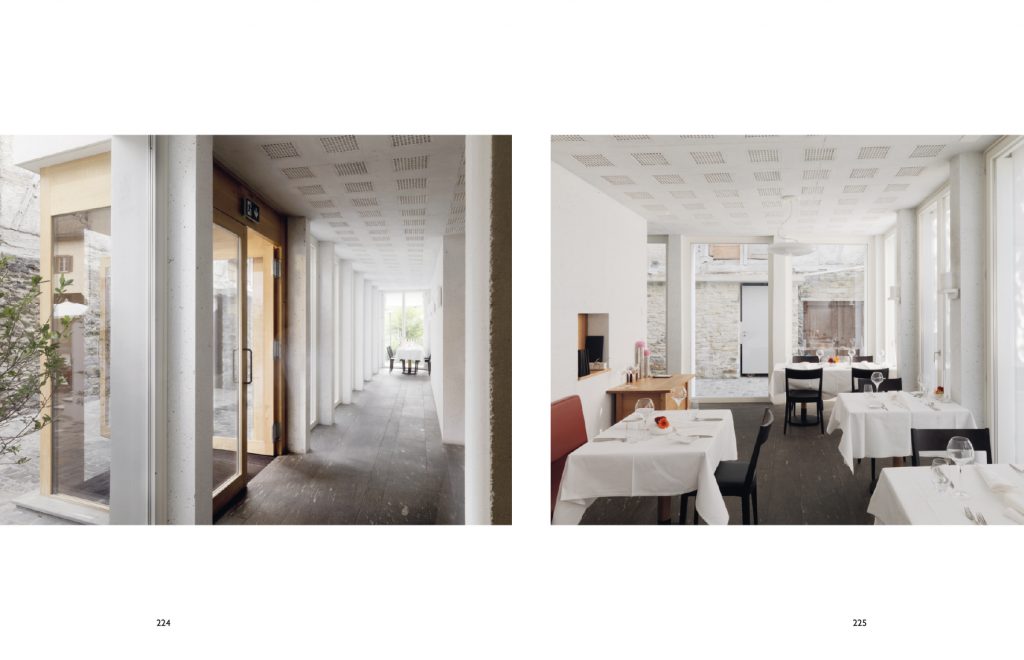
The next feature we should point out is the strongly multidisciplinary and transversal vocation of this monograph. The different projects presented by Gion A. Caminada are generally organized in typological families, as well as being presented in a more or less chronological order. The reading of these projects is intensely complemented by a large number of essays by different authors and, what is less usual, different approaches. We are not dealing here with a succession of writings that highlight the compositional, historiographical or perceptive values of the different works. On the contrary, the texts will offer us approaches to the projects and, above all, to the context that illuminates them from approaches as disparate as economics, sociology, agriculture, geography or the calculation and design of structures. This decision entails the risk that different articles will repeat content or information and thus appear to overlap, but the result undoubtedly goes much deeper in the analysis of a given issue. This, rather than the work of the architect Gion A. Caminada, looks more like the Alpine valley where the town of Vrin is located. We especially appreciate finding a book on architecture that is capable of transcending its scope and sending a message far beyond.
La siguiente característica que deberíamos señalar es la vocación fuertemente multidisciplinar y transversal de esta monografía. Los distintos proyectos presentados de Gion A. Caminada aparecen organizados, generalmente, en familias tipológicas, además de presentarse en un orden más o menos cronológico. La lectura de estos proyectos se complementa intensamente con un gran número de ensayos de diferentes autores y, lo que es menos habitual, distintos enfoques. No nos encontramos aquí frente a una sucesión de escritos que pongan de manifiesto los valores compositivos, historiográficos o perceptivos de las distintas obras. Por el contrario, los textos nos ofrecerán aproximaciones a los proyectos y, por encima de todo, al contexto que los alumbra desde enfoques tan dispares como la economía, la sociología, la agricultura, la geografía o el cálculo y diseño de estructuras. Esta decisión conlleva el riesgo de que diferentes artículos repitan contenidos o información y así parezcan solaparse, pero el resultado alcanza indudablemente mucha más profundidad en el análisis de un asunto determinado. Éste, más que la obra del arquitecto Gion A. Caminada, parece más bien el valle alpino donde se ubica la localidad de Vrin. Apreciamos especialmente encontrar un libro de arquitectura capaz de trascender su ámbito y enviar un mensaje mucho más .
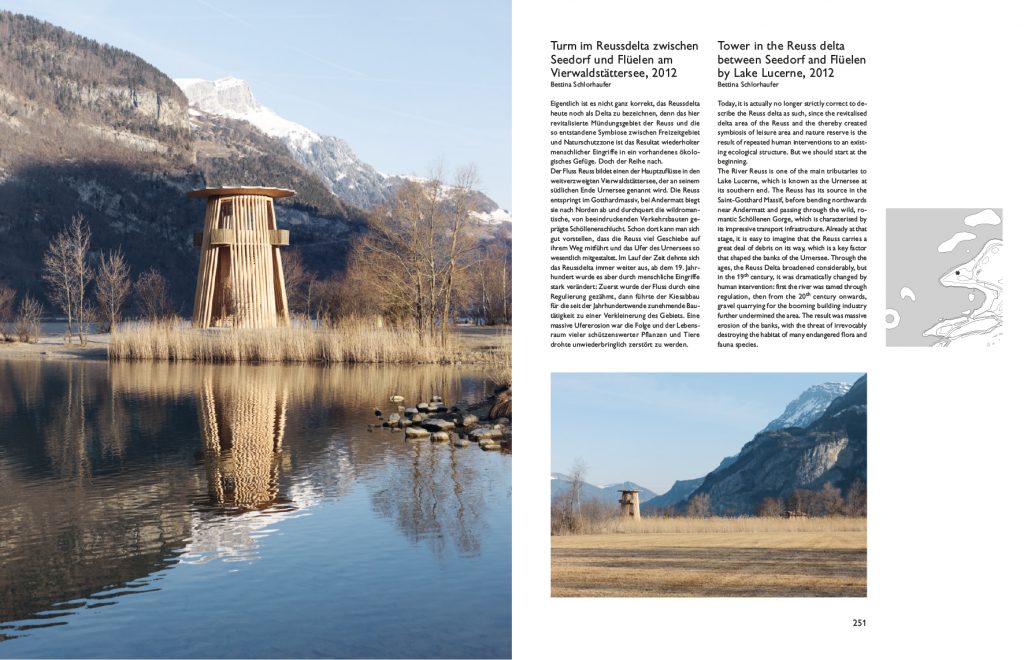
This is the third book by Quart Verlag that we present and analyze in our “All the Books” series and perhaps there is little left to add to the outstanding editing work that is characteristic of their work. All the documents are presented with simplicity, clarity and enviable delicacy. The content is perfectly structured and the editing and graphic design work is superb. The physical support, as is also usual, is impeccable. The paper and covers have rounded corners that give the book a special quality as an object. As if the Zuffel wind had softened them.
Éste es el tercer libro de Quart Verlag que presentamos y analizamos en nuestra serie “All the Books” y quizá nos queda ya poco por añadir al sobresaliente trabajo de edición que es característico en su trabajo. Todos los documentos se exponen con sencillez, claridad y una delicadeza envidiable. El contenido está perfectamente estructurado y el trabajo de edición y diseño gráfico es soberbio. El soporte físico, como es también habitual, es impecable. Papel y cubiertas presentan en esta ocasión unas esquinas redondeadas que otorgan al libro una cualidad especial como objeto. Como si el viento Zuffel las hubiera suavizado.
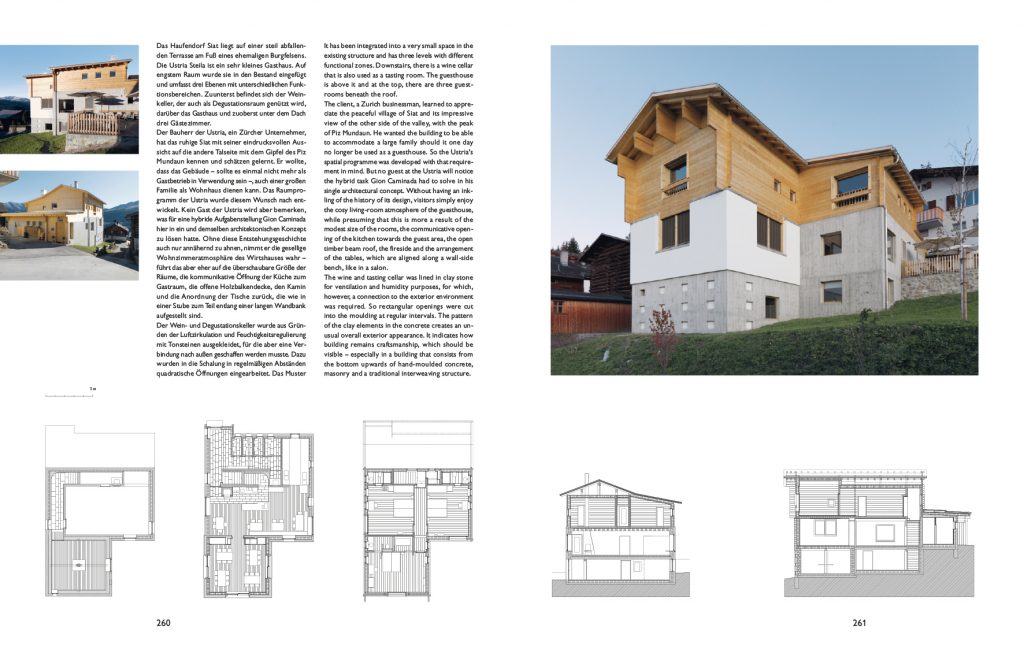
In short, the approach and work of Gion A. Caminada may seem distant to many architects due to the specificity of his work and its intrinsic relationship with its environment. The strangeness that it can produce, however, is its main value, since it is a proven manifestation that a responsible, dialogic and respectful attitude towards everything that its context implies is absolutely compatible with the creative one. And what is more, in moments of drift towards the breakdown of all the values that illuminated the enlightened modernity in the West, it becomes necessary. “Cul zuffel e l’aura dado” is the first book on architecture to come. Let’s celebrate it.
En definitiva, el enfoque y trabajo de Gion A. Caminada puede resultar lejano a muchos arquitectos debido a la especificidad de su obra y la intrínseca relación de ésta con su entorno. La extrañeza que pueda producirnos, sin embargo, es su principal valor, ya que supone una manifestación probada de que una actitud responsable, dialogante y respetuosa con todo lo que implica su contexto es absolutamente compatible con aquélla creativa. Y lo que es más, en momentos de deriva hacia la quiebra de todos los valores que alumbraron la modernidad ilustrada en Occidente, se convierte en necesaria. “Cul zuffel e l’aura dado” es el primer libro de la arquitectura que está por venir. Celebrémoslo.
